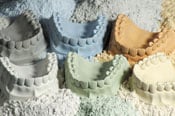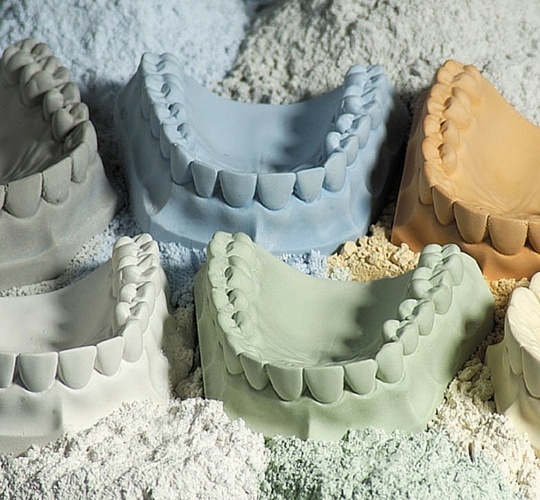Recently , our Technical Support Department received this question:
I'd like to be able to pour up a single model and use it twice to make 2 retainers. The retainers will be made from a “suck down” material. It is crucial that the model NOT break during the separation of the retainer from the model. It needs to be used again to make the second retainer. Is this possible? Do you have a stone that will not break during the separation of the vacuum formed material from the model?
This was our answer. We hope this works for everyone!
I know that you would like a cut and dry answer, but no one has a stone that is guaranteed not to break in this application or any other. Let me give you a few factors based on chemistry, physics and 40 years of experience working with dentists and gypsum, so that we know how to prevent models from breaking.
When you suck down a vacuum formed material over a model and engage undercuts (which are not properly blocked out), with no considered path of insertion, you lock the product onto the model. Then, as your assistants try to separate the two, they are relying on the flexibility or deformation of the suck down material to move in every direction all at once. They also expect the gypsum to either bend or resist bending to allow for the plastic material to disengage the undercuts and move over the height of contour of all of the teeth in the arch. The pressures on the gypsum are immense at this point. While we can increase or decrease the compressive strength (ability to resist being smashed) of dental stone through chemistry, we can't change its lack of ability to bend when you pull something off a model. The stone's ability to resist the bending will be based on the thickness of the individual areas of the reproduced teeth, so you see it fracture at the necks and incisal edges of the model where it is thinnest and weakest. Hardness is not a factor here. Glass is hard, but breaks when you ask it to bend.
Another consideration with gypsum is the water/powder ratio. Every gypsum product has one. If your staff just places powder in a bowl and adds an arbitrary amount of water, there can be problems. Staff also regularly refers to a stone's stack-ability as a determining factor, but that also changes as they ignore the ratios. The more water used in the mix, the more the crystal particles separate and the weaker the set mix will be. Therefore, if stone is mixed to feel, the stone’s characteristics will change from staff member to staff member and mix to mix. They should be weighing the powder and measuring the water for each mix. Pre-packaged stone takes care of the weighing and plastic graduated cylinders (available from Whip Mix) can be used for measuring the water. A simple scale that weighs powder in grams can be purchased almost anywhere for use with bulk products. For the best result, you could be using the AquaSpense machine from Whip Mix. It weighs the powder and dispenses the right amount of water to ensure a proper ratio.
After the mix. you must wait the manufacturer-recommended amount of time before you try to pull the stone from the impression or do a suck down on it and try to separate those materials. If you do not wait the recommended time (approximately 1 hour for most stones), then the material has not grown enough crystal particles and will be weak.
Suggestion: make time available to the staff so they do not just guess or rush. All of these factors take time. If you do not have time to do it right, then you should expect poor performance of the stone.
Die Stones generally perform better because their crystal particle size is smaller, and therefore more dense, than orthodontic plasters or stones. However, they are also more expensive and the same physics and chemistry problems still apply. You might consider a material called Snap Stone, which sets very fast (no machine mixing) and is actually a type 4 die stone. You will get better crystal growth in a shorter period of time, as this material was designed to make bleaching trays. However, the bleaching tray material is not as rigid as the materials you are using for retainers. You might also try using an epoxy or other type resin (not resin stone). They are extremely strong, but they are also very messy to work with.
As you can see there are many factors which have to do with the misapplication of a product, so in the end, the best plan to avoid frustration might be to take two alginate impressions at the same appointment, pour them both, and use one for each material. Alginate and stone are cheap compared to chairtime and patient inconvenience.










Leave a comment